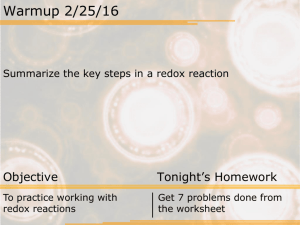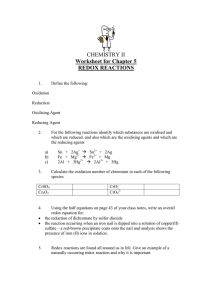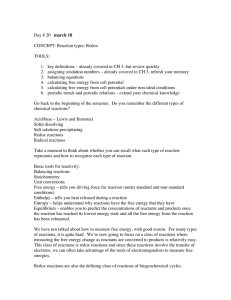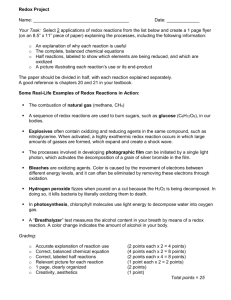Redox Signaling: Take home messages from the chloroplast
advertisement
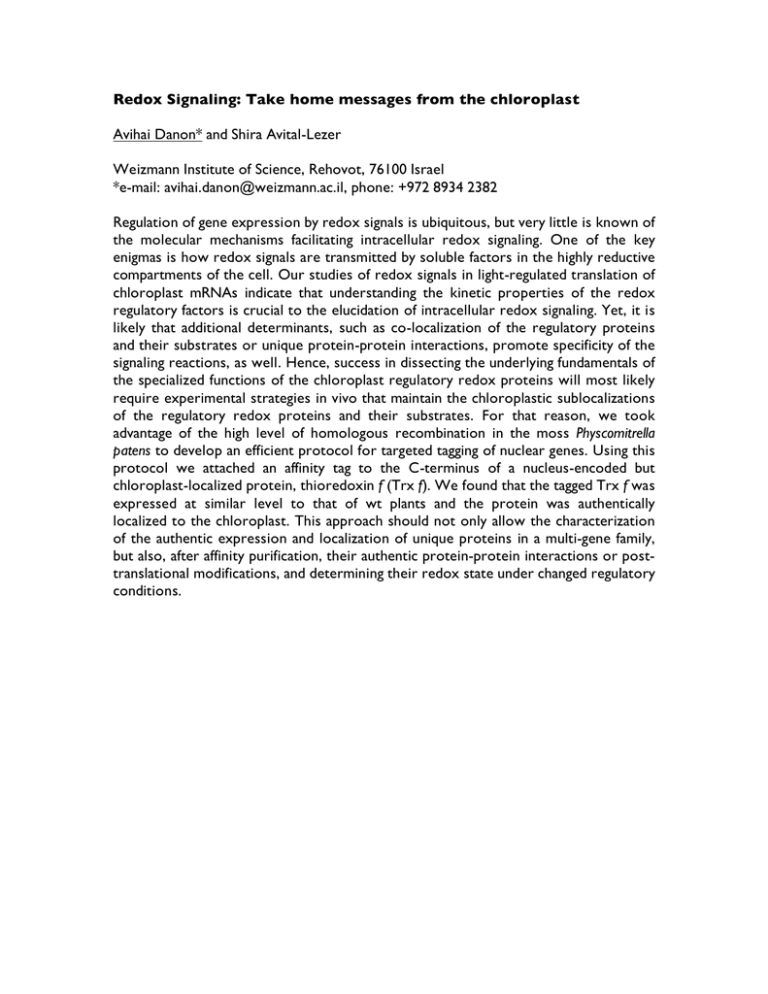
Redox Signaling: Take home messages from the chloroplast Avihai Danon* and Shira Avital-Lezer Weizmann Institute of Science, Rehovot, 76100 Israel *e-mail: avihai.danon@weizmann.ac.il, phone: +972 8934 2382 Regulation of gene expression by redox signals is ubiquitous, but very little is known of the molecular mechanisms facilitating intracellular redox signaling. One of the key enigmas is how redox signals are transmitted by soluble factors in the highly reductive compartments of the cell. Our studies of redox signals in light-regulated translation of chloroplast mRNAs indicate that understanding the kinetic properties of the redox regulatory factors is crucial to the elucidation of intracellular redox signaling. Yet, it is likely that additional determinants, such as co-localization of the regulatory proteins and their substrates or unique protein-protein interactions, promote specificity of the signaling reactions, as well. Hence, success in dissecting the underlying fundamentals of the specialized functions of the chloroplast regulatory redox proteins will most likely require experimental strategies in vivo that maintain the chloroplastic sublocalizations of the regulatory redox proteins and their substrates. For that reason, we took advantage of the high level of homologous recombination in the moss Physcomitrella patens to develop an efficient protocol for targeted tagging of nuclear genes. Using this protocol we attached an affinity tag to the C-terminus of a nucleus-encoded but chloroplast-localized protein, thioredoxin f (Trx f). We found that the tagged Trx f was expressed at similar level to that of wt plants and the protein was authentically localized to the chloroplast. This approach should not only allow the characterization of the authentic expression and localization of unique proteins in a multi-gene family, but also, after affinity purification, their authentic protein-protein interactions or posttranslational modifications, and determining their redox state under changed regulatory conditions.
